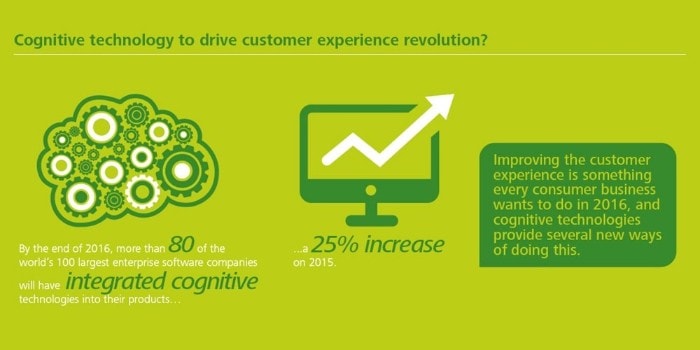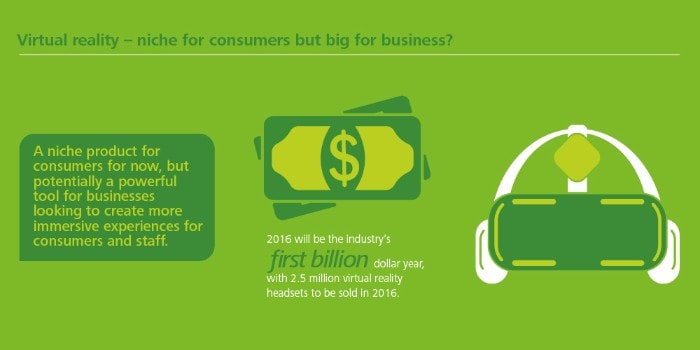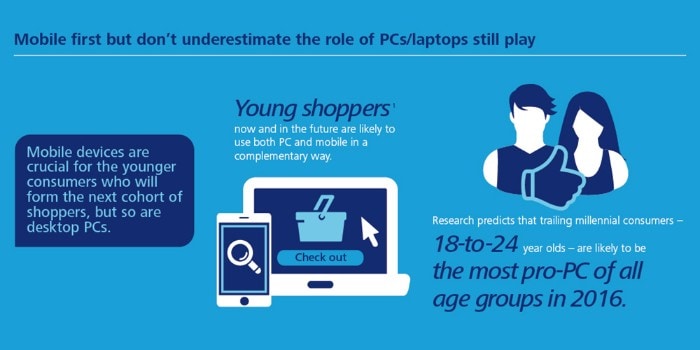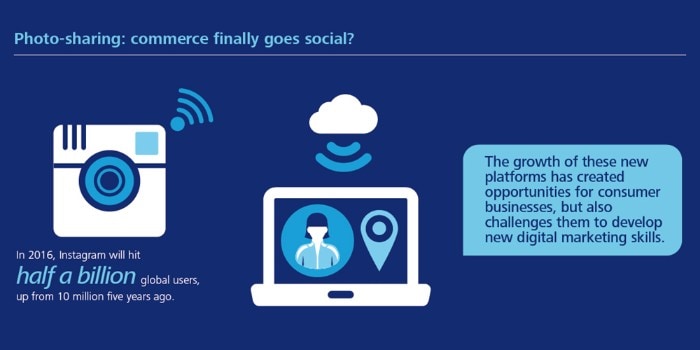Predictions

The Deloitte Consumer Review
Digital Predictions 2016
With digital innovations changing the relationships between customers and brands, we review the top six technological trends which are likely to shake up the consumer business market in 2016.
How can businesses make the most of the digital revolution?
From cognitive technology to touch commerce and photo-sharing, digital advances are fundamentally reshaping and revolutionising relationships between consumers and companies.
Key drivers of the digital revolution
The main driving forces behind the consumer market’s digital revolution are:
- Rising device ownership; 76 percent of UK consumers now own a smartphone and 60 percent have access to a tablet
- Quicker connectivity speeds, with more consumers adopting 4G services, fast fixed-line broadband and smart appliances.
- Changing consumer behaviour, with individuals keen to engage with brands on social media and access services at the touch of a button.
Six top digital trends for 2016
We believe the following six trends will have the greatest disruptive impact on consumer relationships this year:
1. Cognitive technology to drive a customer experience revolution?
Cognitive technologies, such as natural language processing and speech recognition, have radically changed how businesses and consumers interact by enhancing the emotional connection between consumers and brands.
Over 80 of the top 100 global enterprise software companies will integrate these technologies into their products by the close of the year, with the figure potentially hitting 95 percent by 2020.
2. VR: niche for consumers but big for business?
The virtual reality (VR) market could enjoy its first billion-dollar year in 2016, providing new opportunities to businesses looking to create more immersive experiences for consumers.
With roughly 2.5 million VR headsets and 10 million games likely to be sold this year, our analysis indicates that the technology is starting to gain some traction in the consumer market.
But potential obstacles remain, as the widespread use of VR technology may require behavioural changes among consumers.
3. Connectivity to get an upgrade?
Gigabit connections could broaden the horizons of consumer businesses this year. The number per second will surge to ten million by the end of 2016 – a tenfold increase on 2015 – and around 70 per cent of these will be residential connections.
This rate of growth will continue until around 600 million subscribers – the majority of connected homes in the world – are on a Gigabit tariff in 2020. This will allow brands to develop higher quality content.
Gigabit broadband is also capable of supporting innovations like VR and the ‘internet of things’, increasing the use of targeted television adverts, and improving mobile apps.
4. Touch payments to drive m-commerce growth?
The gap between the amount of browsing and actual purchases through mobile shopping apps could start to close in 2016, thanks to the rise of touch-based payment services.
This year could see a 150 percent surge in the number of people adopting these services to make mobile purchases, to 50 million global users.
But with touch-based payment services largely designed for apps at present, firms need to develop easier ways to pay on mobile-optimised websites.
5. Mobile first?
Mobile devices will play a crucial role in the shopping habits of younger consumers this year but widespread laptop adoption will also continue as individuals use PCs to complement their smartphones and tablets.
We predict those aged between 18 and 24 will be the most pro-PC age group this year, after finding that 86 percent owned a laptop in 2015. Companies should now design their web-based services with both PCs and mobiles in mind – recognising that different devices are used at varying points of the customer journey.
6. Photo-sharing: commerce to finally go social?
Web communications will become even more visual during 2016, with our research suggesting 2.5 trillion images will be shared or stored online, up 15 percent on last year.
The growth of image-sharing could help companies turn the social media environment into a transactional one, as networking sites begin to offer functions like ‘buy’ buttons. But brands will need to tread carefully, crafting images which feel authentic, are a cause of interest, and are of a high quality.





